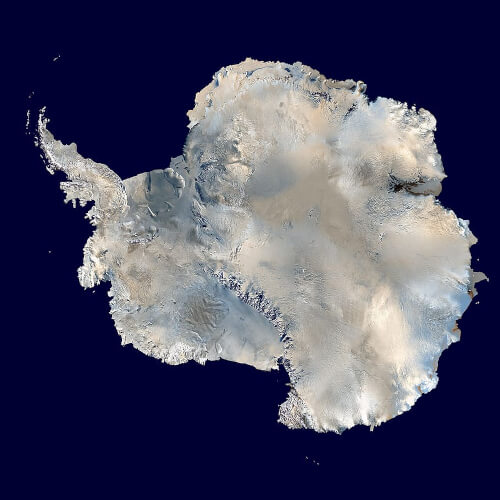



Antarctica is the southernmost continent on Earth, located on the South Pole. It is the fifth-largest continent in land area after Asia, Africa, North America, and South America.
Antarctica is known for its extreme cold, with an average annual temperature of -57°C (-70°F). Despite its harsh conditions, Antarctica is home to a variety of unique plant and animal life that has adapted to survive in the continent's frigid and unforgiving environment.
Antarctica has been a focus of scientific exploration for many years. The continent’s unique geography and climate make it an ideal location for studying a variety of Earth science topics, including climate change, geology, and oceanography.

Researchers from around the world have established research stations on Antarctica to study its ice sheet, which represents about 90% of the world’s glacial ice. By studying the ice sheet and its history, scientists can learn about past climate conditions and make predictions about future changes. Antarctica is also home to unique geological features, such as the Transantarctic Mountains, which provide valuable insights into the continent’s geological history.
In addition to studying the land and ice, scientists are also interested in the waters surrounding Antarctica. The Southern Ocean plays a crucial role in regulating global climate by absorbing heat and carbon dioxide from the atmosphere. By studying the ocean and its interactions with the atmosphere and ice, scientists can improve their understanding of global climate processes.
Antarctica is an ice-covered continent, with about 98% of its surface covered by frozen water. In fact, the Antarctic Ice Sheet is the largest single mass of ice on Earth and contains about 90% of the world’s ice.
This ice is formed from snow that falls on the continent and compacts over time. Because this snow is made up of fresh water, as it compacts and turns into ice, it traps fresh water within the ice sheet. If all of this ice were to melt, it would raise global sea levels by about 60 m (200 ft).
On July 21, 1983, researchers at Antarctica’s Vostok station measured a temperature of -89.2°C (-128.56°F). Vostok Station is a Russian research station located near the center of East Antarctica. The station was established in 1957 and is one of the oldest permanent research stations on the continent. The extreme cold at Vostok Station is due to its high elevation and its location in the interior of the continent, where cold air sinks and becomes trapped.
Winds in some places of the continent can reach and continue to blow at 320 km/h (200 mph). This is only slightly lower than the speed of the strongest ever hurricane, Hurricane Patricia, which reached 345 km/h (215 mph) for only about 1 minute.
These strong winds are caused by the katabatic effect, where cold air from the high interior of the continent flows down towards the coast. The winds can be so strong that they can blow away snow and ice, exposing bare rock in some areas
Lake Vostok is a pristine freshwater lake in Antarctica, buried beneath 3.7 km (2.5 mi) of solid ice. Lake Vostok was discovered in 1996 by Russian scientists and is believed to have been isolated from the rest of the world for millions of years.
The Dry Valleys are located in Antarctica's Transantarctic Mountains. They are sheltered from the coastal winds by the surrounding mountains, causing the air to heat up inside and evaporate any moisture. Because of this, the valleys have extremely low humidity and almost no snow or ice cover. The valleys are also home to unique ecosystems, including microorganisms that have adapted to survive in this extreme environment.
Antarctica is home to the Gamburtsev Mountains, a range of steep peaks that rise to nearly 3,000 meters (9,000 ft) and stretch 1,200 km (750 mi) across the interior of the continent. What’s even more interesting is that these mountains are completely buried under up to 4,800 m (15,750 ft) of ice!
The Gamburtsev Mountains were discovered in 1958 by a Soviet expedition and are believed to be about 34 million years old. Scientists are still studying these mountains to learn more about their formation and history. Despite being buried under ice, the Gamburtsev Mountains play an important role in the formation of Antarctica’s ice sheet by directing the flow of ice.